My cousin Todd, owner of Combs Landscape Design, came over to talk about our garden last week. He encouraged me to think of the backyard as a room with 'walls' of fence and house to be decorated with wooden panels painted by Lil. He advised us to expand the number of garden beds and arrange them in a funky mixed up way to complement the kid friendly decor coming soon. Thanks to intern Keara and nice weather at the end of last week, we got right to the work of building new beds. We also moved a bed from the chicken run to the open sunlight. We are adding 41 sq feet of growing space for a total of 184 sq feet in raised beds.
I hung myself and my expensive camera out an upstairs window to take the picture below. Don't worry, Dad, Alex was right behind me ready to call an ambulance if I fell. Later I used my favorite online editor Picnik to add text that shows exactly where we will plant everything.
Lil had the brilliant idea to add more fruit trees to the chicken run to provide the hens with shade and grow something yummy out of reach of the hungry birds. A dwarf apricot and pear are on their way to us from Stark Brothers. We will also move some raspberry bushes from a shadier part of the yard to take advantage of the sunlight.
Before May 15, we need to get dirt in the new beds and shore up some of the others. We'll set Lil to painting as soon as we get home from New England. Todd has an idea to paint the fence to highlight the 'wall' concept. We also have plans to move Lil's playhouse and make a patio on the shady side of the yard for al fresco dining and grilling, which will also call for moving some landscape plants.
Oh, and did you spot the deadly garden label? Alex will share about his pet project next week.
What are your gardening plans for 2011? If you are a beginning grower, be sure to download my free Grow Your Garden ebook.



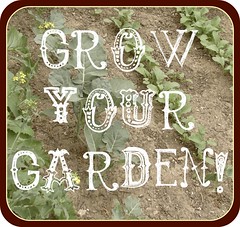 Now that you've decided
Now that you've decided 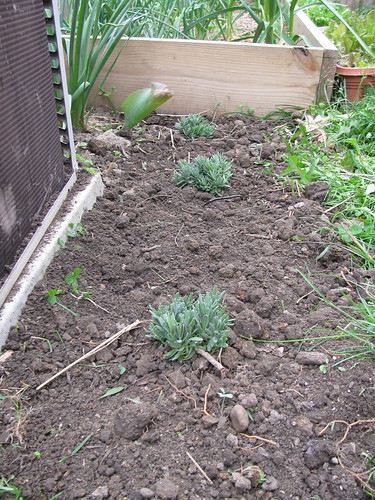
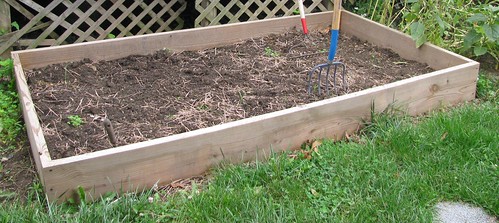 The next common bed style is the raised bed. Here, sides are built from lumber and dirt is filled in the top. The Pioneer Woman has a great
The next common bed style is the raised bed. Here, sides are built from lumber and dirt is filled in the top. The Pioneer Woman has a great 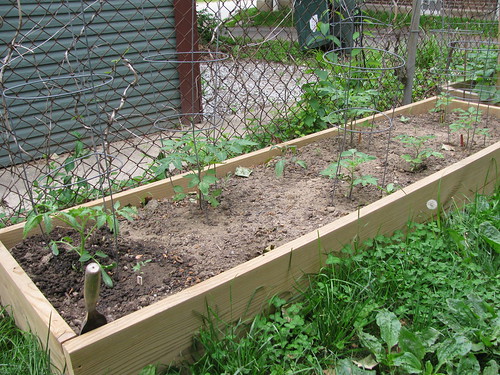 In our second round of bed building, we skipped the anchors. In our experience, the raised beds sides do not bow or move. The weight of the soil holds everything in place just fine. If you are looking to save some labor and cost, skipping the corner anchors might be a good choice.
In our second round of bed building, we skipped the anchors. In our experience, the raised beds sides do not bow or move. The weight of the soil holds everything in place just fine. If you are looking to save some labor and cost, skipping the corner anchors might be a good choice.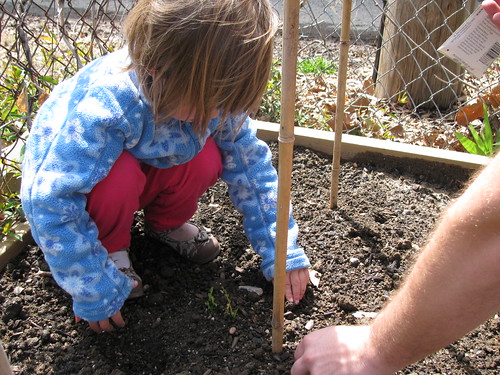 Direct sowing is one of Lil's favorite garden projects. She is good at punching her finger down to make holes and covering the seeds back up. We label rows with old plastic silverware, popsicle sticks, or whatever else is available. I lust after reusable metal
Direct sowing is one of Lil's favorite garden projects. She is good at punching her finger down to make holes and covering the seeds back up. We label rows with old plastic silverware, popsicle sticks, or whatever else is available. I lust after reusable metal 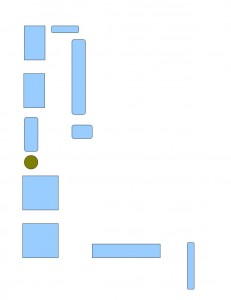
 In the introduction to my Grow Your Garden series, I shared
In the introduction to my Grow Your Garden series, I shared 